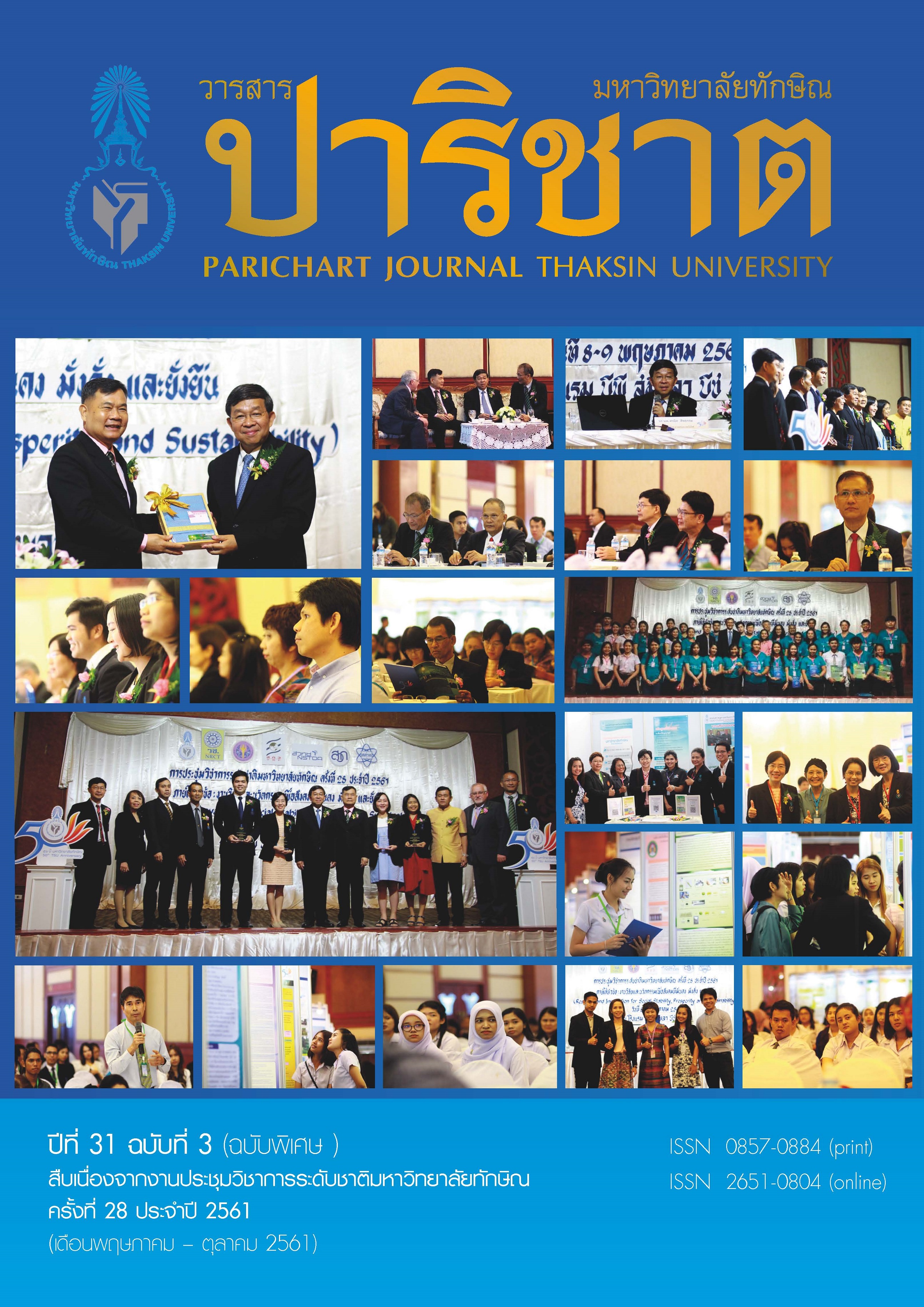The Study of Code-Switching between Pattani-Malay Dialect, Thai, and English in English Language Teaching and Learning in the Three Southern Border Provinces
Main Article Content
Abstract
This article aimed to investigate reasons and factors affecting the codes-switching of Pattani-Malay
dialect, Thai, and English and explore functions and forms of codes- switching of Pattani-Malay dialect,
Thai, and English of English teachers in the three southern border provinces of Thailand. The multi-stage
sampling technique was employed in order to get 10 teachers as the samples. The data collection
tools were field notes and scripts of audio-recordings for classroom observation and a semi-structured
interview. Qualitative descriptive analysis and percentage were used. The results revealed that the
teachers tend to switch their codes in the classroom in order to show the interpersonal relationship, to
raise the social status, to speak the relevant topic or issue, to express emotion or feeling, to show the
identity, to emphasize the significance of meaning, and to persuade the audience. Moreover, this study
also found that there are many functions and forms of codes-switching; quotation, addressee
specification, interjection, reiteration, message qualification, personalization versus objectification, and
expression of ideas.


